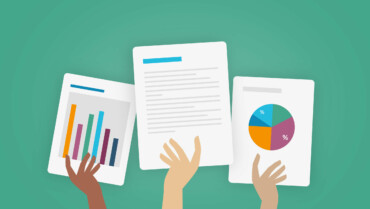A major goal of business-related projects is to be profitable for the respective entity(-ies) that will bring it to the market. The same applies for the EU projects under the Horizon Europe programme (as well as the former Horizon 2020). Saying that, a solid and well-studied business plan in a Horizon Europe proposal is the key to reach this point. It is exactly this go-to-market strategy that the evaluators would like to see in the Impact Section, among other criteria, of your proposal to approve the project for EU funding. In this article, we will try to break down the various segments of a business plan, which will lead to the final output of such a financial analysis, the profit and loss statement (P&L).
How can we present a P&L analysis when we have not finalised the technical development yet?
Before we move into business and financial details, we need to brainstorm on this very simple, but very rational question. It is true that the need to include a business plan and a P&L statement significantly depends on the specific programme the applicant(s) will apply to and ask for EU funding. Is it also connected to the minimum required Technological Readiness Level (TRL).
In Horizon programmes, such as FET (Future and Emerging Technologies) where the starting TRL is from 1 to 3, it is quite obvious that as the technology has not even reached the prototype stage, projecting profits and losses that will take place even five years later is quite challenging. On contrary, for programmes such as the EIC Accelerator or the former FTI (Fast-Track-to-Innovation) where the applicants need to start from a TRL5-6 (prototype developed and demonstrated at least at a relevant environment), a well formed business plan, even preliminary, is crucial to include in the final proposal application. In programmes, like Thematic Priorities or the very recent Green Deal where the technology needs to start from a TRL4, such a financial analysis is a nice-to-have asset.
Proposal tip: Always try to include a preliminary go-to-market strategy. This will demonstrate that the applying entities are not focusing only on the technological development but they have already started working on the commercial impact of the project and its potential contribution to the companies’ scale-up(s). In any case, a preliminary business plan presented in an EU proposal is not committing and the evaluators are aware that this will be updated and adapted during the project’s execution.
Key points of a business plan in your Horizon Europe proposal
To be able to provide a P&L statement, the applicants need to first present all the necessary stages of the business plan that will potentially lead to sales, revenues, and profits. The most important ones are:
Business model
After defining who will be your potential customers, it is very important to define via which routes you will reach them. Although, this is highly dependent on the nature of each company and project try to be as clear as possible regarding the model that will be followed, namely:
- Direct sales: this is a quite common practise for targeting customers at a local level (national, adjacent countries) and with customers that you have already established commercial relationships e.g. for other business activities. Direct sales are also quite common for big enterprises that have an established pan-European or global commercial network
- Distribution network: smaller companies and SMEs usually follow this path aiming to expand in new markets (e.g. new regions and territories) where they have no contacts. In this case, a basic commission plan is good to be included
- Licensing: this is another way to reach multiple markets, via receiving a royalty for allowing third parties to commercially use your final offering. Nevertheless, the protection of the innovation (patent, copyright, trademark, trade secret) is a key asset to guarantee the protection of the intellectual property of the applicants
It is not necessary to follow only one of the aforementioned routes. A successful business model shall study each commercial opportunity and create specific multi-strategies, if necessary.


